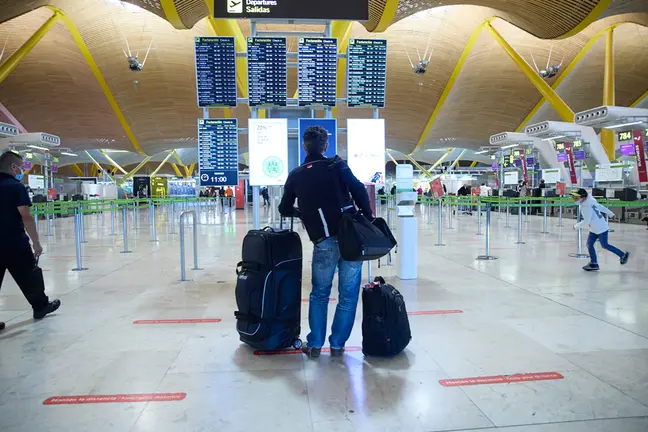The coronavirus (koronavirus, in Finnish) is proving to be a greater threat to Finns and to the sustainability of Finnish health care than previously estimated.
The government has been discussing since 23 March on how to most effectively slow down the spread of Covid-19.
In the past, it has been decided to cancel major events, close schools and ban meetings of more than 10 people. The Finnish Institute for Health and Welfare (THL) estimated that they have slowed down the propagation of the infectious wave. However, that is not enough and stricter measures are coming.
According to the Finnish broadcasting network (Yle), the estimates of the spread of the coronavirus in Finland have become tougher. This has happened although people's encounters have already diminished due to restricted mobility.
Two different scenarios
THL presented two different scenarios to the government on how effective the transmission of infection is and how fast the wave of infection is passing through Finland.
According to THL’s estimation, 11,300 people could need hospitalization in Finland due to the new coronavirus. 3,600 patients of these would need intensive care. “At the peak of the epidemic, over 900 patients are estimated to be in the hospital at the same time, of whom 280 would be in intensive care.” However, this estimation is updated constantly.
It is still unclear what the natural propagation of the new coronavirus is.
Professor Kari Auranen, from Turku University department of Statistics said, "For example, in Italy, Lombardy, it has been estimated that the infectiousness rate (R0) before delimitation was slightly above 3. We have taken this into account and produced two scenarios, one with R0 = 1.6 and the other with R0 = 1.8." he continued .
"According to a more severe scenario (R0 = 1.8), coronavirus would require hospitalization during the epidemic of 15,500 patients, of whom 5,000 would be in intensive care.”
Epidemic would last 4-6 months
Tuija Leino, Chief Medical Officer from THL said, “Forecasts become more accurate as we use data from Europe. The model takes into account the age distribution of patients in intensive care in France”.
The THL is not aware of any significant increase in the severity of working-age cases in Europe.
According to THL’s modeling, hospitalization and intensive care are predicted for the 18 weeks of the epidemic, 9 weeks before the peak and 9 weeks after the peak.
The lowest infection rates estimated over a week ago have proven too optimistic. Due to the restrictions already made, the duration of the epidemic is expected to be longer. With the current information, the length of the epidemic is estimated to be 4-6 months.
Estimates are based on international data on the coronavirus and THL domestic data on the spread of diseases in Finland. Models are refining and changing all the time.
Uusimaa can infect the rest of Finland
To further reduce the chances of infection, the government decided that restaurants should be closed from Saturday.
People’s movement must also be restricted between Finnish regions. The government is looking for ways to save the rest of Finland from the spreading of the coronavirus epidemic from Uusimaa, or at least to slow the spread of the epidemic.
In Uusimaa, the infection has spread rapidly, with more carriers and sufferers than the rest of Finland combined. On Wednesday, there were over 500 people infected in Uusimaa, and nearly 800 infections have been confirmed in tests throughout Finland.
Of those who are infected with Covid-19 only a few become ill and the majority feel mild symptoms. A small proportion is more seriously sick and some require intensive care. For some, treatment is ineffective and a small percentage of patients die.
If the disease progression is slowed down in Finland, hospitals will be better able to deal with serious cases.
Health care will be tested
Uusimaa has a different demographic structure than much of the rest of Finland. Its population of 1.7 million is younger and healthier on average than elsewhere.
If the infection spreads strongly from Uusimaa to other parts of Finland, health care will be put to the test. Elsewhere in Finland, there is a more ill and relatively older population than in Uusimaa. If those people get the disease, cases will probably be more serious.
Hospitals in other Finnish regions would not be able to provide treatment if a large number of patients were to be hospitalized at the same time. Other patients in need of intensive care cannot be treated in the same facilities as the coronavirus patients.
It is estimated from various sources that the heaviest shortages can come from the intensive care system, which in practice is very little available outside of Uusimaa.
From soft control to roadblocks
Finland is currently training more nurses in intensive care and converting other departments into intensive care units.
Equipment and personnel will be moved according to how the disease is progressing across the country. Therefore, it would be vital that the infection could not yet spread from Uusimaa to other parts of Finland and that the transmission of the infection would slow down at all.
The isolation of the entire Uusimaa region would be too broad. The calculators are now going through the municipalities one by one to make the delimitation as accurate as possible.
How the isolation of Uusimaa would then be controlled has not been told yet. There are alternatives from soft controls to roadblocks. It has not yet been decided on what grounds the border should be crossed.












